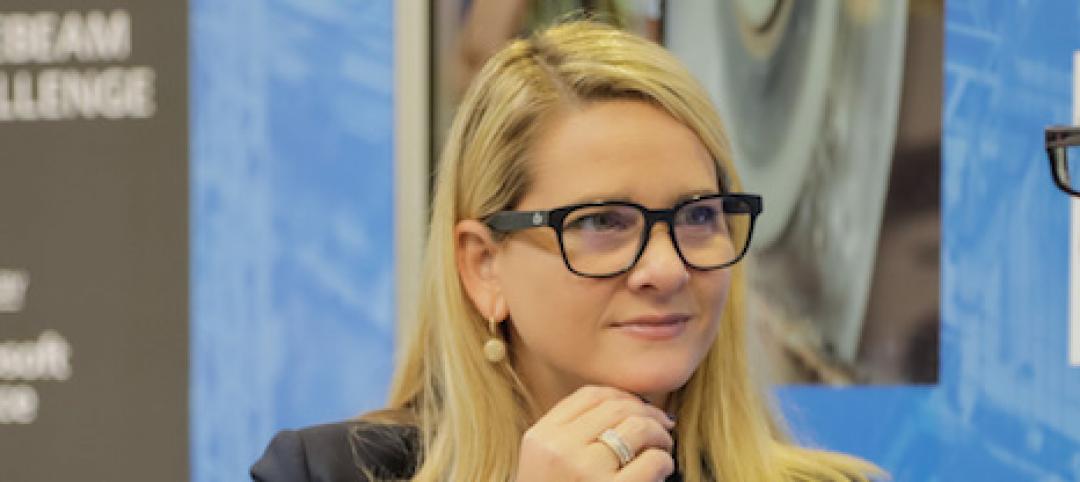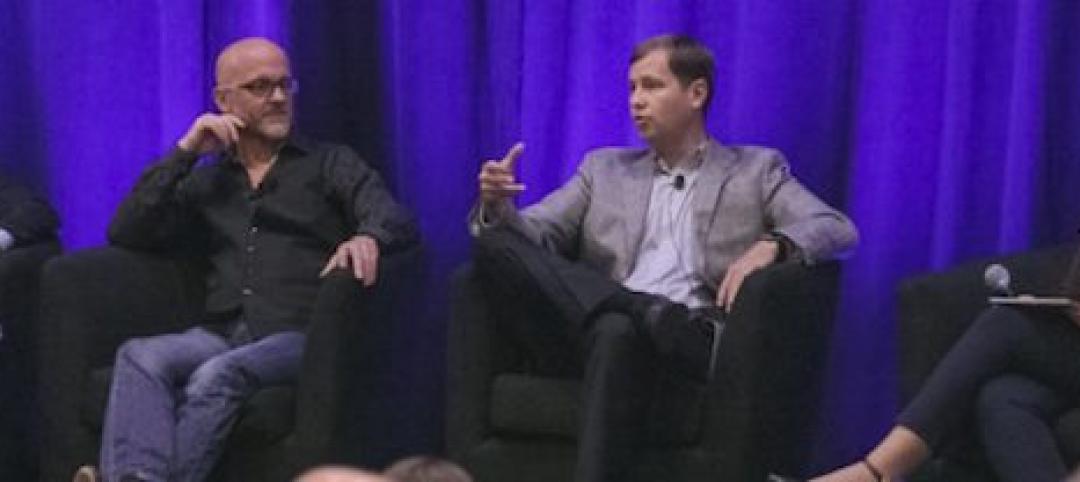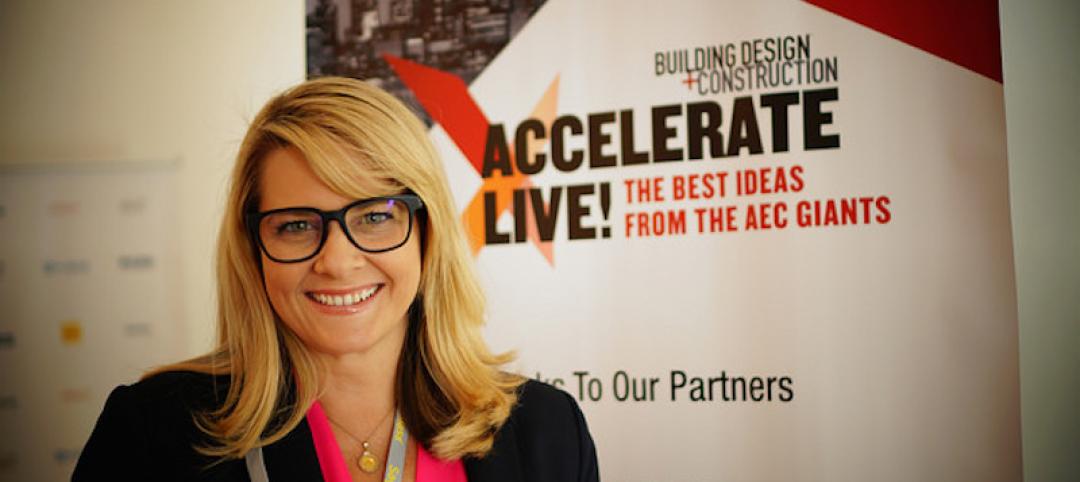A little over a year ago, I embarked on a search to find individuals in the AEC space who were putting new hardware to work in the field. After reading Dave Barista’s BIM 2.0 article highlighting industry leaders who were speculating about the next wave of innovation for AEC, I was inspired to start my journey. I looked for people who were putting these ideas into practical use and found such a person at Rogers-O’Brien. Todd Wynne, an Operations Technology Specialist, is tasked with finding new and innovative ways to go about the business of construction. Last year I covered his Google Glass project, which turned out to be one of my top three blog posts of all time. Based on this, I figured I can’t be the only one who is looking to know more about firms successfully piloting new hardware applications for the field.
After a full year of implementation and testing, I wanted to see what type of progress they’d made—which ideas had stuck and which ideas had fallen flat. I made the trip out to Dallas along with our VP of Product Management for some firsthand exposure to the cool technology being played with in the field.
First item on the agenda: find out how things were going with the Google Glass project. I was happy to learn that the project had produced a working prototype. Through integration with a field communication solution called FieldLens, Todd demonstrated how they use Glass to log issues in the field. Todd gave us a live demonstration, calling on Glass to wake up and access FieldLens, take a picture, dictate the message and send it off. He then showed how FieldLens distributed that information via news feed to all the project partners. Pretty cool stuff. Nice and simple, just the way the field wants it.
Todd and his team see this as only the beginning of integration opportunities between hardware and apps for communication to and from the field. There’s one hiccup, however. After logging many hours compiling feedback for Google with testing and real world usage, the trail has gone cold. Although they’ve reached out to share information with Google, there hasn’t been an effort to further the dialogue.
Although disappointed the feedback loop between Todd’s team and Google wasn’t working the way they’d hoped, Todd and his team had a table full of “toys” they were anxious to share with us. The approach they take is to look at technology affecting everyday life outside of the AEC industry and find ways to apply it. We’ve all seen the charts demonstrating just how unproductive the construction industry is. Well, Todd and his team are searching for ways other industries are applying technology and testing what can be applied to construction to move the needle on productivity and also find ways to communicate better overall.
Exploring ways to push the bounds of sharing design data with Virtual Reality hardware, they let us try two hardware virtualization products. Oculus Rift (www.oculus.com/) allows a user to step into the model, creating a first-person experience pioneered through gaming technology. Epson’s Moverio smart glasses (http://www.epson.com/cgi-bin/Store/jsp/Landing/moverio-bt-200-smart-glasses.do) are designed to convert 2D paper drawings into 3D elements. Each of these was high on the cool factor but not quite ready for primetime application in the field.
One technology that really showed promise of having a practical application today was an iPhone hardware add-on called FLIR ONE™ (http://www.flir.com/home/). Produced by a company called FLIR, it’s a device you snap onto your iPhone in order to read thermal data emitting from elements on the job site. For under $250 MEP contractors can use their iPhone to look through walls, piping and ducting to detect leaks, hot spots and potential energy leaks. The picture below was taken by Todd on the jobsite as he demonstrated the device for his HVAC trade partner. They were experiencing performance issues and couldn’t figure out where the issue was coming from. The contractor had a hunch it had something to do with a sharp 90-degree bend in the piping, but short of getting down into the suspended ducting, it was still a mystery. Todd pulled out his iPhone, attached the FLIR ONE, and in seconds they discovered the contractor’s hunch was correct. They were then able to justify the effort to get in and solve the issue, saving them valuable time by removing the guess work.
The final technology they shared with us was a Quadcopter currently being used to aid in weekly site reporting. Stay tuned to learn how this technology saved the project team $15,000 in warranty work.
More from Author
Sasha Reed | Dec 15, 2017
Future vs. current state of construction innovation: How will we make the leap?
Looking beyond today’s constraints to the possibility of what “could be” is a key characteristic of those defining and delivering innovation to design and building firms across the globe.
Sasha Reed | Sep 19, 2017
BIM vs VDC…how the US and the UK differ in approaching digital project delivery
In this four-part series, Bluebeam VP Sasha Reed sat down with industry experts to examine the need for defining and understanding digital workflows and data management throughout the design and construction project lifecycle.
Sasha Reed | Jul 19, 2017
Introducing StrXur by Bluebeam
Our goal is to present unique perspectives you may not be able to find anywhere else.
Sasha Reed | Jul 13, 2017
Defining the future by mastering the art of change
From my perspective, what separates organizations thriving in the digital revolution from those who are not boils down to one thing: leadership.
Sasha Reed | Mar 15, 2017
Incentivizing change: Show me the money
Who is succeeding, and on what terms? And what will it take for everyone to experience the benefits of that success?
Sasha Reed | Oct 4, 2016
The talent shortage: Will the training the AEC industry desperately needs arrive in time?
As the construction industry bounces back from the Great Recession, an entirely new class of tech-savvy construction professionals has been created, and the supply of these highly skilled, tech-proficient pros has been quickly exhausted.
Sasha Reed | Jul 11, 2016
Construction Disruption at AECX: Technology, hackathons and the promise of change in LA
The lead up to AECX featured a discussion providing insight into the current state of the AEC technological revolution by exploring opportunities, challenges and choices AEC pros face.
Sasha Reed | Jun 23, 2016
Implementing Change: The Five Biggest Mistakes to Avoid
Two truths from the jobsite: 1) The best part about uncovering a problem is discovering its solution, and 2) The worst part about discovering the solution is implementing it.
Sasha Reed | Jun 9, 2016
With all these sharks in the water… (No Predictions Here...Part 2)
Rather than fighting to control the proliferation of apps, perhaps we should be training our eyes to look for signs of long-term viability among all the fins in the water















